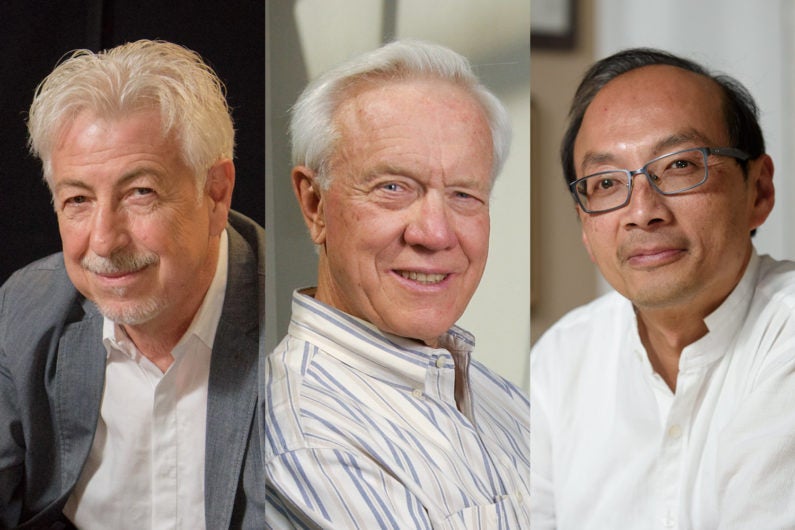The National Academy of Engineering elects three Stanford faculty
Oussama Khatib, Nils Nilsson and David Tse each earned engineering’s top honor with election to the National Academy of Engineering.
Three Stanford faculty members were elected to the National Academy of Engineering (NAE). Oussama Khatib, professor of computer science and director of the Stanford Robotics Lab; Nils Nilsson, emeritus professor of computer science; and David Tse, Thomas Kailath and Guanghan Xu professor of engineering, were among the 83 members and 16 foreign members elected this year.

From left, Oussama Khatib, Nils Nilsson and David Tse. (Image credit: L.A. Cicero)
Founded in 1964, the NAE recognizes engineers whose education, research and practice have made significant contributions to the field. Election to the academy is among the highest honors in the field of engineering.
Khatib’s contributions include new models, control architectures, planning algorithms and design methodologies for advanced robotics systems. His research explores the biomechanics of human motion and the brain’s motor control representations of complex tasks. Khatib also worked on the development of human-friendly robots that are safe for collaborative interaction in dynamic environments, such as domestic, production, hospitals, offices and public spaces. Through haptics and visual interfaces, he explores robot operations in remote environments to study underwater ecology and climate change, to uncover natural resources and historic secrets buried deep at archaeological sites or to perform disaster prevention and recovery operations – be it deep in oceans and mines, at mountain tops or in space.
Nils Nilsson has also made significant foundational contributions to robotics. After graduating from Stanford with a PhD in electrical engineering in 1958 and spending more than 20 years at the Artificial Intelligence Center of SRI International, Nilsson returned to Stanford as the chair of the Department of Computer Science, where he served until 1990. His accomplishments include co-inventing the STRIPS automatic planning system and A* search algorithm as well as developing the first general-purpose, reasoning mobile robot.
David Tse has worked on information theory and its applications in various fields, including wireless communication, energy and computational biology. His projects include designing assembly software that handles DNA and RNA sequencing data as well as the invention of the proportional-fair scheduling algorithm, which is used in all third and fourth generation cellular wireless systems around the world.
NAE currently has more than 2,000 peer-elected members, including 115 Stanford faculty. This year’s induction ceremony will take place on Sept. 30, 2018 at NAE’s annual meeting in Washington, D.C.
